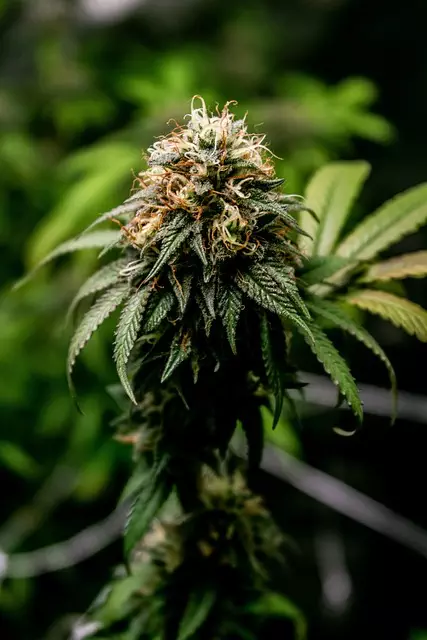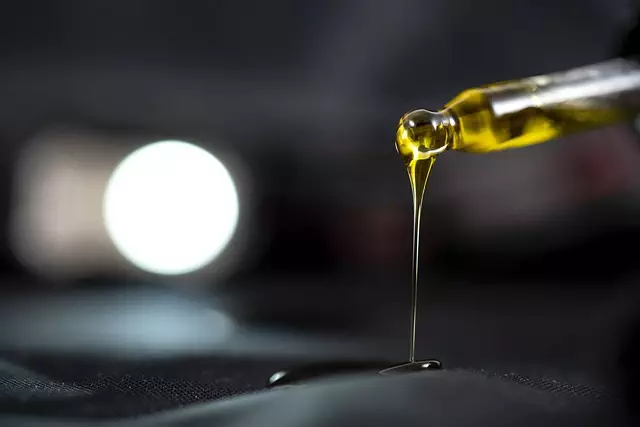High Potency Cannabinoids (HPCs) are powerful compounds derived from cannabis that offer a wide range of therapeutic and recreational benefits. To safely and effectively incorporate HPCs into your regimen, it's crucial to start with the lowest effective dose, monitor your body's response, and adjust as needed while seeking advice from healthcare professionals. The method of consumption plays a significant role in how quickly and potently you feel the effects; vaporization provides rapid and sustained effects, edibles offer a longer duration but with variable onset, capsules offer simplicity, and topicals are ideal for localized relief without intoxication. It's important to store HPC products securely, adhere to local laws, and understand that individual factors like body weight, tolerance, and metabolism influence how cannabinoids affect you. Always prioritize safety and personal well-being when using HPCs.
Exploring the nuanced landscape of High Potency Cannabinoids (HPC) can be a transformative experience for consumers seeking targeted wellness effects. This article delves into the intricacies of HPC, elucidating their scientific mechanisms and guiding you through the safe and legal procurement of these potent compounds. We will compare HPC to traditional CBD products, offering dosage guidelines tailored to individual needs based on factors like body weight, tolerance, and desired effects. Understanding bioavailability’s impact on efficacy and learning about various consumption methods are crucial steps in responsibly utilizing HPC for optimal well-being. Join us as we navigate the world of High Potency Cannabinoids with precision and care.
Understanding High Potency Cannabinoids (HPC)

High Potency Cannabinoids (HPC) represent a significant and rapidly evolving segment within the cannabis industry. These compounds, including THC, CBD, and various other cannabinoids, possess potent properties that can influence both therapeutic and recreational applications. Understanding HPC is crucial for consumers and healthcare providers alike, as these cannabinoids are responsible for the plant’s effects. Unlike their lower potency counterparts, HPCs can deliver more pronounced outcomes due to their higher concentrations of active ingredients. This heightened efficacy means that users may experience stronger therapeutic benefits or more intense psychoactive effects.
Navigating the dosage of High Potency Cannabinoids requires careful consideration and personalized approach, as each individual’s sensitivity and tolerance levels can vary widely. It is imperative to start with a low dose to gauge one’s response before gradually increasing the amount if necessary. This cautious approach helps avoid potential adverse effects and allows for a tailored experience that aligns with one’s wellness goals. Additionally, users should be aware of the legal regulations and dosage recommendations specific to their jurisdiction and consult with healthcare professionals for personalized advice. Understanding HPC involves not only recognizing the potency of these cannabinoids but also adopting a responsible and informed approach to their consumption.
The Science Behind HPC: How They Work

High Potency Cannabinoids (HPC) represent a concentrated subset of cannabinoids found within the cannabis plant, which include compounds like CBD and THC, among others. These potent phytochemicals interact with the endocannabinoid system in humans and animals, influencing a wide range of physiological processes. The efficacy of HPC is primarily due to their ability to bind with high affinity to cannabinoid receptors throughout the body, effectively modulating neurotransmitter release, inflammation, and pain sensation, among other functions.
The science behind HPC operates on the principle of selective targeting of cannabinoid receptors, such as CB1 and CB2, which are part of a vast cell-signaling system thought to play a role in regulating a range of functions and maintaining homeostasis. The therapeutic potential of HPC is being explored for various conditions due to their high bioavailability and specificity. For instance, certain HPCs can be formulated to have an effect that is more pronounced or directed towards particular health concerns compared to the traditional broad-spectrum cannabis extracts. Advances in extraction and purification techniques have enabled researchers to isolate these compounds with precision, offering a new frontier in understanding the complex interplay between these cannabinoids and human biology.
Sourcing High Potency Cannabinoid Products Safely and Legally

When exploring high potency cannabinoid products, safety and legality are paramount considerations. Procuring such items involves a diligent approach to ensure compliance with local regulations. In the United States, for instance, the 2018 Farm Bill legalized hemp-derived cannabinoids containing less than 0.3% THC at the federal level, opening paths for consumers to access these products legally. However, state laws can vary significantly, so it’s crucial to stay informed about the specific regulations in your area.
Sourcing high potency cannabinoid products safely begins with reputable vendors and licensed dispensaries. These establishments adhere to strict standards and quality control measures that help ensure the purity and safety of their offerings. Consumers should prioritize purchasing from entities that provide third-party lab test results, as these reports verify the cannabinoid content and absence of contaminants. Additionally, online marketplaces that specialize in CBD and other cannabinoids can be a reliable source, provided they are transparent about their sourcing practices and product details. Always prioritize legitimacy and legal standing when selecting where to buy high potency cannabinoid products to ensure a safe and compliant experience.
Key Differences Between High Potency Cannabinoids and Traditional CBD Products

High Potency Cannabinoids (HPC) represent a distinct category within the cannabinoid spectrum, offering users a more potent and targeted effect compared to traditional CBD products. Unlike conventional CBD which primarily focuses on cannabidiol as its main active compound, HPC includes a full-range cannabinoid profile that can include THC, CBN, CBC, and other lesser-known cannabinoids alongside CBD. This diverse composition allows for what is often referred to as the “entourage effect,” where the synergistic interaction between different cannabinoids, terpenes, and flavonoids can enhance or modulate the effects of each individual component.
In contrast, traditional CBD products are typically derived from hemp and contain CBD isolates or broad-spectrum extracts that may have other cannabinoids and compounds but with THC removed to maintain legality and avoid psychoactive effects. The key differences between HPC and traditional CBD lie in their intended use, potency, and the breadth of cannabinoids present. HPC products are designed for users seeking high-strength cannabinoid therapy for specific conditions or those looking for a more comprehensive cannabinoid experience. They are often used for managing chronic pain, inflammation, anxiety, and other health issues where a higher dose of cannabinoids is deemed necessary. Users should always consider dosage guidelines provided by manufacturers or healthcare professionals when incorporating HPC into their wellness routine to ensure safe and effective use.
Dosage Guidelines for High Potency Cannabinoids: Finding Your Sweet Spot

When exploring the realm of high potency cannabinoids, understanding dosage is crucial for an optimal experience and safety. High potency cannabinoids, such as THC, CBD, and CBN, can significantly impact one’s well-being, and finding the right dosage is a personal journey. It’s essential to start low and go slow; this approach allows individuals to gauge their body’s response without overwhelming it. The effects of high potency cannabinoids can vary widely among users due to factors like metabolism, tolerance, and individual sensitivity. As such, it’s important to pay close attention to the dosage guidelines provided by manufacturers or healthcare professionals.
For those new to high potency cannabinoid products, a common starting point is 5 mg of THC for experienced users or less for novices. This initial dose can be incremented gradually every few hours if no adverse effects are observed. It’s also advisable to consume these substances in a controlled environment where one feels comfortable and safe to fully assess the experience. Regular users may adjust their dosage over time, seeking that ‘sweet spot’ where the desired effects are achieved without causing unwanted side effects. Always prioritize personal comfort and legality when considering dosage of high potency cannabinoids, and remember that consistent use can lead to tolerance, necessitating dose adjustments.
Factors Influencing HPC Dosage: Body Weight, Tolerance, and Desired Effects

When determining the appropriate dosage of High Potency Cannabinoids (HPC) for an individual, several key factors must be considered to ensure safety and efficacy. The first factor is body weight, which plays a significant role in how cannabinoids are metabolized and their impact on the body. Heavier individuals often require higher doses due to a larger volume of distribution and potentially slower absorption rates. Conversely, lighter individuals may experience effects more intensely at lower dosages. It’s crucial to start with a low or moderate dose and assess individual response before adjusting the dosage upward, especially for those new to cannabis products.
Another critical factor is an individual’s unique tolerance level to HPC. Tolerance can develop over time with consistent use, which may necessitate increases in dosage to achieve the same effects. However, it’s important to approach any dosage adjustments cautiously, as higher doses can amplify side effects and lead to an undesirable experience. The desired effects also influence dosage decisions. Whether one seeks relief from chronic pain, anxiety reduction, or appetite stimulation, the goal should guide the dosing strategy. Users aiming for therapeutic benefits may require a different dosage than those seeking psychoactive effects. It’s imperative to consider personal goals and consult with healthcare professionals when determining the optimal HPC dosage for one’s needs.
The Role of Bioavailability in HPC Dosage and Efficiency

When considering the efficacy of High Potency Cannabinoid (HPC) products, bioavailability plays a pivotal role in determining their dosage and overall efficiency. Bioavailability refers to the proportion of a drug or other substance that enters the circulation when introduced into an organism and remains available to have an active effect at the site of action. In the context of HPCs, understanding bioavailability is crucial for optimizing therapeutic outcomes. For instance, administering cannabinoids in their original form may not yield significant effects due to their poor absorption through the gastrointestinal tract and extensive first-pass metabolism. In contrast, alternative delivery methods such as sublingual sprays, transdermal patches, or vaporization can circumvent these issues, leading to higher bioavailability and more pronounced effects. The choice of administration method is thus a critical factor in achieving the desired therapeutic benefit from HPCs. Additionally, individual factors such as metabolism, body composition, and other physiological differences influence how cannabinoids are absorbed and their subsequent impact. Therefore, personalized dosing, taking into account these variables, becomes essential for effective and safe use of HPCs. Precision in dosing is further amplified by the unique chemical properties of different cannabinoids, such as CBD, THC, and CBN, each with its own bioavailability characteristics when consumed through various routes. Therefore, guiding patients on appropriate dosage requires a nuanced understanding of both the pharmacokinetics of these compounds and individual patient factors to ensure the most effective and efficient use of HPCs for their intended therapeutic or recreational purposes.
Common Methods of Consuming High Potency Cannabinoids

High potency cannabinoids, often abbreviated as HPCOs, can be consumed in a variety of ways, each offering different experiences and onset times. One common method is through vaporization, which allows users to inhale cannabinoid-rich vapors without combusting the plant material, thus avoiding the harmful byproducts of smoke. This method is efficient, as it delivers cannabinoids and terpenes directly into the bloodstream via the lungs, offering a quick onset of effects that can last for several hours. Another popular consumption method is through ingestible oils or tinctures, which are taken sublingually or added to food and beverages. These products are carefully calibrated for dosage, providing precise amounts of cannabinoids in each serving. They offer a longer duration of effects, as the cannabinoids are processed through the digestive system before entering the bloodstream. Edibles, which include candies, chocolates, and baked goods, also fall under this category, offering a delicious and discreet way to consume HPCOs with effects that can range from mild to intense, depending on the dosage and individual metabolism. Additionally, capsules are available for those who prefer a straightforward method of ingestion, with each capsule containing a pre-measured dose of cannabinoids, allowing users to track their intake easily. Lastly, topical applications of HPCOs can be applied directly to the skin for localized relief from pain or inflammation without intoxicating effects, making them suitable for therapeutic use during the day. Each method has its own advantages and should be chosen based on personal preference, desired effect, and specific needs. Users are advised to start with a low dose to gauge their individual sensitivity before gradually increasing the dosage as needed, always adhering to local regulations and guidelines regarding cannabis consumption.
Precautions and Best Practices for Using High Potency Cannabinoids Responsibly

When incorporating high potency cannabinoids into one’s wellness routine, it is imperative to approach their use with caution and informed decision-making. Users should start with the lowest effective dose and gradually titrate upwards as needed, allowing their bodies to acclimate to the compounds’ effects. It is crucial to consult with a healthcare professional before initiating any cannabinoid regimen, especially high potency variants, to ensure safety and appropriateness for individual health profiles.
Best practices for using high potency cannabinoids responsibly include understanding the specific strains or products one is consuming, as potency can vary significantly. Education on the various cannabinoids such as THC, CBD, and others, and their distinct effects, is essential. Additionally, individuals should be mindful of the method of consumption, as different methods like edibles, inhalation, topicals, or sublingual administration can influence both onset and duration of effects. Storage considerations are also paramount; keeping high potency cannabinoids securely locked away from children and pets is a non-negotiable safety precaution. Adhering to local laws and regulations regarding possession and use is another critical aspect of responsible consumption. By adopting these precautions and best practices, users can navigate the therapeutic potential of high potency cannabinoids while minimizing risks and ensuring a safe experience.



